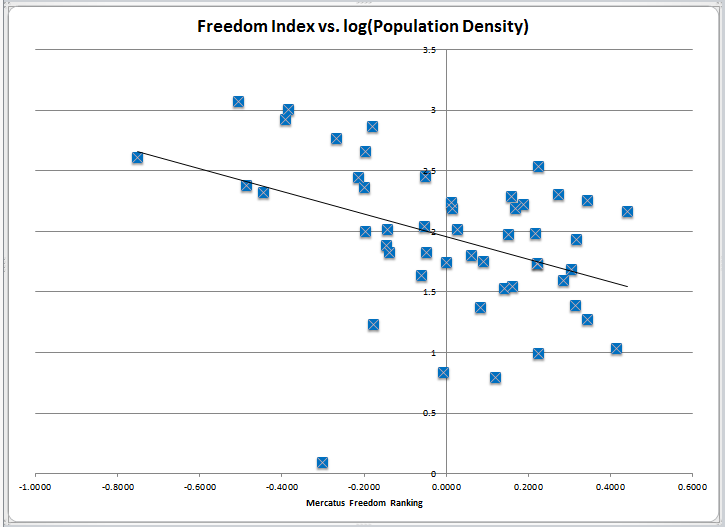Freedom and Population
July 20, 2011
Roscoe, N.Y.
"Hell is other people" says a character in Jean-Paul Sartre's play No Exit. Well, maybe sometimes. But most of the time our lives are enriched by other people, whether it be in a friendship, or a romance, or a family, or a classroom, or a party. Our lives are also enriched by people who we know only through the novels they've written, or the music they've composed, or the art they've created. In a very real sense, life is other people, and our relationship with them.
If there were no other people around besides oneself, there would be no need for language, no need for manners, no need for morals, and certainly no need for government and laws. In this sense, being stranded on a desert island is the freest existence imaginable.
On the other hand, the more people living in a particular area, the more possibility there is of bumping into one another, and possibly experiencing conflicts. Over the past couple thousand years, civilized people have attempted to lessen the impact of these conflicts by instituting government and laws. As the United States Declaration of Independence indicates, "Governments are instituted among Men, deriving their just powers from the consent of the governed" to ensure our "unalienable Rights," which include "Life, Liberty and the pursuit of Happiness."
A few days ago I took issue with a ranking of US states by "freedom" because I felt that the definition of freedom used in this study focused too much on so-called economic freedoms, too much on alcohol, tobacco, and drugs, and virtually nothing on those aspects of life that aid in personal growth and what John Stuart Mill in his reformulation of utilitarianism called "the permanent interests of man as a progressive being." (In other words, the ranking has an extreme Libertarian bias.) I thank everyone who contributed to this discussion, including those who called me a "typical liberal elitist douche" and "stereotypical NYC/SF fart sniffer."
As I pondered the differences of "freedom" by state, I wondered if it had anything to do with population density. Obviously there's a big difference between the types of laws required for a 23-square-mile island with one inhabitant, and a 23-square-mile island with 1.6 million inhabitants (of which I am one most of the year).
The downloadable Excel spreadsheet I created lists the 2009 freedom rankings for the 50 states (which I got from this page), population of the 50 states, land area, and a calculated density, which I crossed-checked here. (Numbers don't match exactly but they're good enough — as they say — for government work.)
Then I did a scatter plot of the freedom index vs. the logarithm of the population density and here it is:

The horizontal axis is the freedom index from "less freedom" on the left to "more freedom" on the right. The vertical axis is the logarithm of the population density.
Obviously we usually like scatter plots to show a clear linear clustering, and this one does not. However, it definitely shows a rough correlation between higher population densities and "less freedom," as the (Excel supplied) trend line indicates.
Yes, we have lots of laws in New York City, and some of them are really oppressive, such as when you really need to drive your car 80 miles per hour down 5th Avenue. But other laws are sometimes actually for our own protection in an environment where cars travelling 80 miles per hour on 5th Avenue can be somewhat hazardous.